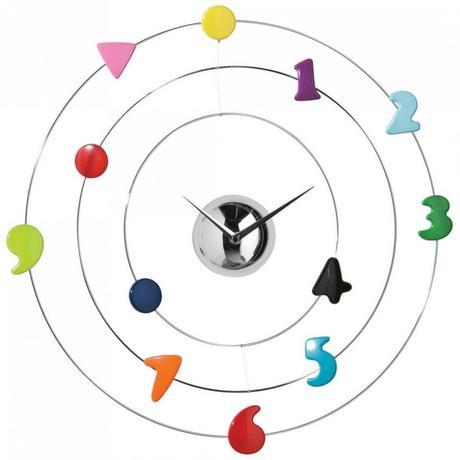 Sometimes we all need to know the time, and we have a variety of different devices to tell us that; our mobile phones and wristwatches in the wall clock chiming the office or on the news on the radio.
Sometimes we all need to know the time, and we have a variety of different devices to tell us that; our mobile phones and wristwatches in the wall clock chiming the office or on the news on the radio.
But accuracy are all these clocks and does it matter if all say different times? For our day to day business, probably not too much if the clock office wall is faster than watch your boss probably will not for a moment of firing delay. However, in some environments accuracy and synchronization are vital in a minute can make a difference, something that in the past or not, or even stolen anything!
Time synchronization in modern computer networks is essential. It not only provides the only frame of reference between all devices, it is important to ask anything from securing, planning and debugging a network of a time stamp for applications such as data acquisition or disposition of email.
Most PCs and network devices internal clocks, called chip real-time clock (RTC) providing time and date information. The chips are battery backed so that they can keep time even during power outages. However, PCs are not to be perfect clocks, their design is for mass production and low cost-optimized, rather than maintaining accurate time.
Therefore these internal clocks are prone to drift and although for many applications this may be entirely adequate, often the machines working together in a network to be synchronized with each other and problems can arise time of particularly sensitive transactions . A seat imagine to buy the plane, but said at the airport that the ticket was sold twice because it was bought on a computer that had a slower clock?
Time Server NTP (Network Time Protocol) to synchronize a single time reference all machines currently on the network. This time reference can (the computer clock or internal time of a wristwatch could) be relative or absolute such as an atomic clock, the (Coordinated Universal Time) and UTC relay it is also equally possible.
Atomic clocks are the absolute timekeeping device accurate to one second every 1.4 million years. However, atomic clocks are extremely expensive and are usually found in large scale physics laboratories. However, NTP can synchronize over a network atomic clock to UTC Network Global Positioning System (GPS) or specialist radio transmissions (MTF in the UK) is not used.
While some organizations have to synchronize their networks to UTC such as airlines and the stock market, a network at any time to be synchronized and continue to work, but there really is no substitute for UTC. It is not only the most efficient network with the rest of the world have been synchronized, a source of UTC is the essential security against fraud, data loss and legal consequences, and without it, organizations can be vulnerable and lose credibility.
NTP (version 4) can maintain time over the public Internet within 10 milliseconds (1 / 100th of a second) and even better through LAN with an accuracy of 200 microseconds (1 / 5000th of a second) you can carried out under ideal conditions.
Note: It is strongly recommended by Microsoft and others, based external time should be used instead of the Internet, because they can not be authenticated. NTP servers are available specialists, time on networks, either the MSF (or equivalent) can sync signal or GPS time server.
With atomic clocks and NTP external clock references
Atomic clocks are or higher for more than fifty years. These are the clocks that use an atomic resonance frequency as a timer instead of conventional oscillating crystals, such as quartz.
Most atomic clocks use the resonance of the cesium-133 atom resonates every second at an exact frequency 9192631770th Since 1967, the International System of Units (SI) defined the second as the number of cycles of cesium -133 which makes atomic clocks (sometimes called cesium oscillators) the standard for time measurement.
Since the resonance of the cesium-133 atom is so precise, which makes atomic clocks accurate to less than 2 ns per day, equivalent to about one second in 1.4 million years.
Because atomic clocks are so accurate, and can be of a scale continuous and stable time, a UTC world (Universal Time Coordinated Universal Time) to be held, was developed and supports such features as leap seconds - added to offset slowing rotation of the Earth.
However, atomic clocks are extremely expensive and are usually found in large scale physics laboratories. However, the NTP (Network Time Protocol), the standard means time synchronization on computer networks to achieve can be synchronized with an atomic clock using the network of Global Positioning System (GPS) or specialist radio transmissions.
The most commonly used is the GPS (Global Positioning System), developed by the US Army. GPS includes at least 24 communication satellite positioning high orbit and location specific information. Each GPS satellite, this can be used an atomic clock, which are in turn used as a timing reference, they are.
There are also a number of transmission time and frequency of national radio that can be used to synchronize a NTP server. In Britain the signal (called MSF) is broadcast by the National Physics Laboratory in Cumbria which serves as a national time reference in the UK, there are also similar systems in Colorado, US (WWVB) and Frankfurt, Germany (DCF-77 ). These signals provides UTC with an accuracy of 100 microseconds, however, the radio signal is limited in scope, and is susceptible to interference.
based using a GPS NTP server or NTP time server radio, network clients UTC time can be synchronized within milliseconds, depending on network traffic.

